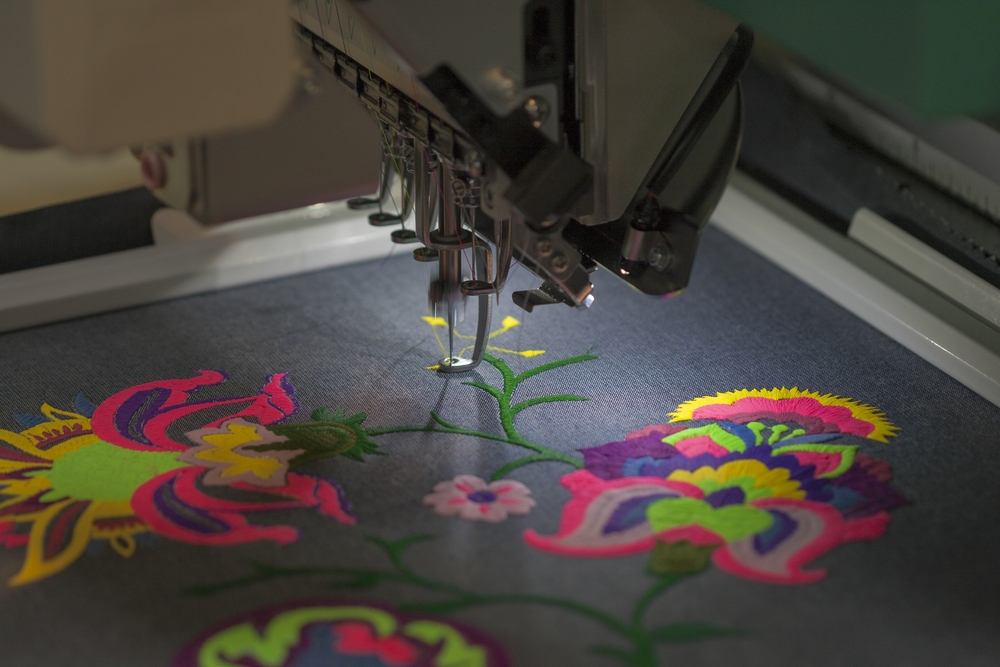Discover Different Kinds Of Needlework Digitizing Techniques
Needlework digitizing has advanced substantially over the years, providing a myriad of strategies to bring designs to life in the digital world. From the intricate creativity of typical hand embroidery digitizing to the precision of the boxing technique, and the convenience of auto-digitizing software application programs, the alternatives are vast. The realm extends to a lot more innovative strategies like photorealistic embroidery digitizing and the fascinating world of 3D needlework digitizing. Each technique brings a special set of possibilities and obstacles to the table, making the expedition of these methods a compelling journey for those in the embroidery world.
Standard Hand Needlework Digitizing
Standard hand needlework digitizing includes the process of converting elaborate hand-stitched designs into electronic layouts for equipment needlework. This method needs experienced artisans to meticulously analyze the handmade layout and afterwards utilize specialized software application to recreate it in a digital layout. Each stitch, shade, and detail should be thoroughly translated to make certain that the significance of the original hand needlework is maintained in the electronic version.
Among the vital obstacles of conventional hand embroidery digitizing is recording the details and nuances of the handmade style. Digitizing for Embroidery. Artisans should have a deep understanding of different needlework methods, such as satin stitch, chain stitch, and French knots, to properly replicate these techniques in the digital world. Furthermore, they need to have a keen eye for information to make certain that the digital design keeps the same degree of virtuosity and craftsmanship as the original hand-stitched piece
Punching Technique
To seamlessly change from typical hand needlework digitizing to the boxing technique, craftsmens have to now concentrate on transforming the intricate electronic designs into directions that needlework devices can translate. The punching strategy includes utilizing specialized software program to produce digital files that consist of commands for the needlework equipment to adhere to. This process requires a deep understanding of not just the style itself but also the abilities and restrictions of the needlework equipment.

Auto-Digitizing Software Application Programs
Embroidery digitizing has actually been reinvented by the arrival of auto-digitizing software application, offering craftsmens with sophisticated tools to convert electronic styles into embroidery machine guidelines effectively. Auto-digitizing software application use formulas to analyze digital pictures or vector documents and create needlework designs immediately. These programs enable fast and precise conversion of intricate designs right into stitch patterns, saving time and effort for embroiderers.
Among the essential benefits of auto-digitizing software application is its straightforward user interface, making it obtainable to both newbies and skilled digitizers. These programs commonly consist of attributes such as stitch editing and enhancing tools, thread color matching, and the capacity to sneak peek the last stitched design. Additionally, auto-digitizing software program can manage complex styles with several colors and complex details, generating high-grade needlework files ideal for different apparel and fabric projects.
While auto-digitizing software program uses benefit and performance, it is necessary for individuals to recognize the restrictions of automated digitizing. Fine-tuning and hand-operated modifications might still be needed to achieve the check it out preferred needlework top quality, especially when managing elaborate or one-of-a-kind styles. By leveraging the capacities of auto-digitizing software together with manual digitizing methods, craftsmens can improve their embroidery digitizing process and develop spectacular stitched items.
Photorealistic Embroidery Digitizing
Using innovative digital imaging methods, accomplishing photorealistic results in needlework digitizing has become a desired skill among modern artisans. This method involves transforming high-resolution pictures right into elaborate stitch patterns that very closely imitate the original layout, leading to needlework pieces see page that exhibit natural information and depth.
To accomplish photorealistic needlework digitizing, craftsmens need to have an eager eye for information and an extensive understanding of exactly how various stitch kinds and thickness can influence the final result. By very carefully drawing up each shade and color in the photo, embroiderers can develop a digital documents that guides the embroidery maker to duplicate the subtleties of the original image precisely.
Photorealistic needlework digitizing is particularly popular in developing customized layouts for apparel, home decoration, and art items where capturing the essence of a photograph or art work is critical. This method allows artisans to transform memories, landscapes, pictures, and complex art work into stunning embroidered work of arts that display a blend of conventional craftsmanship and cutting-edge modern technology.
3D Embroidery Digitizing
With the advancement of digital imaging strategies in achieving photorealistic cause needlework digitizing, the exploration of 'D Embroidery Digitizing' provides a new dimension to the intricacies of style replication. 'D Embroidery Digitizing' refers to the three-dimensional digitizing strategy that adds deepness and appearance to needlework styles, producing an extra sensible and visually appealing end product. This method uses software that mimics the impact of light and darkness on the embroidery layout, improving its total visual visit this site impact.
Among the crucial benefits of 'D Needlework Digitizing' is its ability to make styles look even more lifelike and dynamic. By including depth to the embroidery style, the last product appears extra practical and fascinating (Digitizing for Embroidery). In addition, this technique enables even more creative flexibility in design execution, making it possible for embroiderers to trying out different appearances and impacts that were formerly challenging to accomplish
Conclusion
